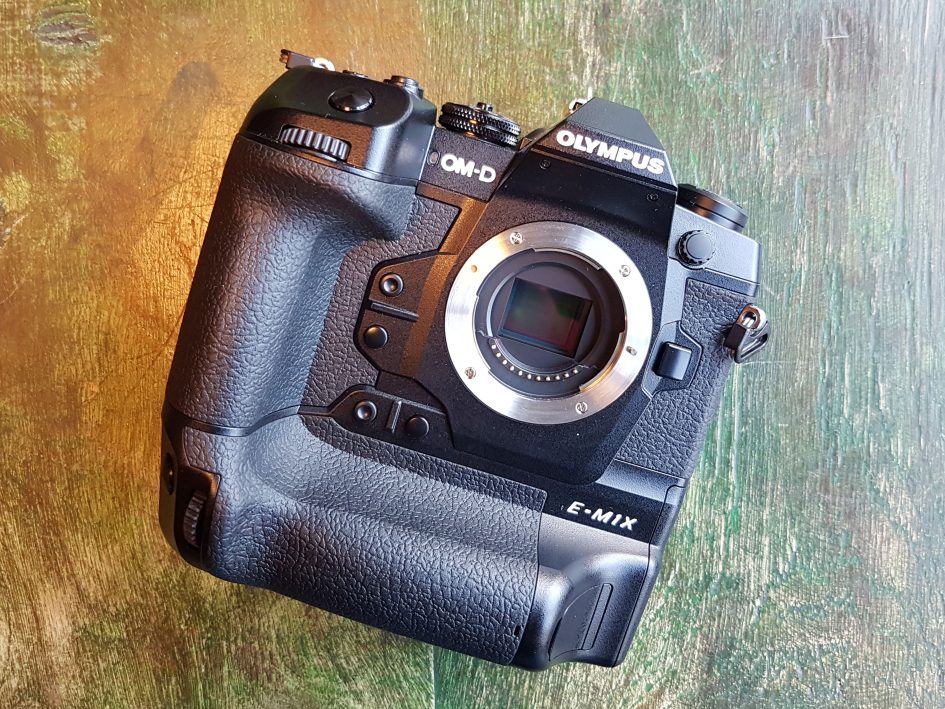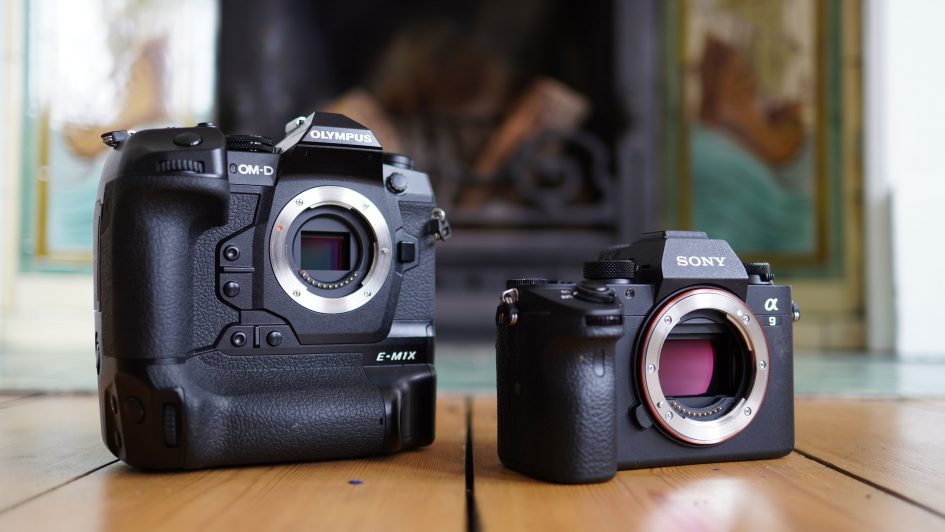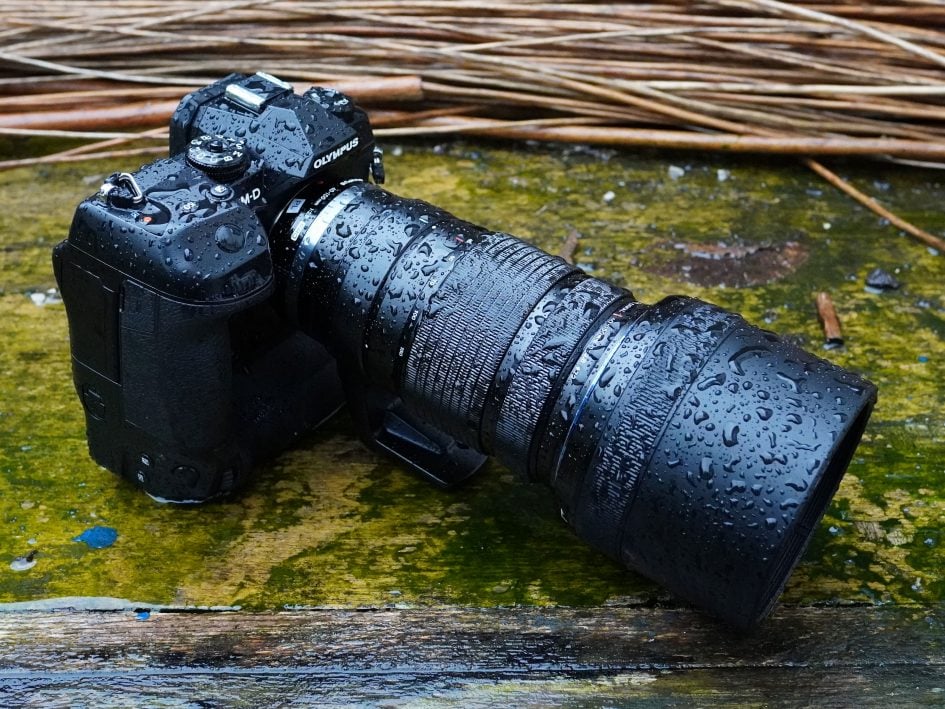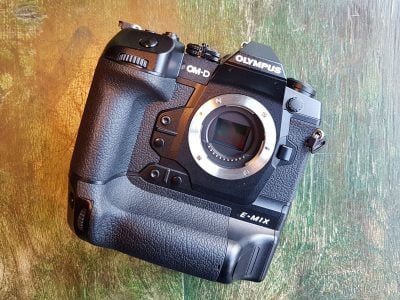Olympus OM-D E-M1X review
-
-
Written by Gordon Laing
Verdict
There’s no doubt the Olympus OM-D E-M1X is a tough, confident and capable camera, with a wealth of unique features that make it stand out in the crowd. It has the best built-in image stabilisation of any camera I’ve tested, allowing you to handhold stills that would normally require a tripod or film video that looks like you used a gimbal. The body with an integrated portrait grip feels great, has some of the best controls around and is sufficiently weather-proofed to stand water being poured directly over it. There’s built-in GPS and field sensors to record location, temperature, elevation and direction. The autofocus system has been greatly improved and it’ll successfully track most sports and wildlife subjects in bursts up to 18fps with the electronic shutter or 10fps with the mechanical. Then there’s the wealth of innovative modes including a high-res composite option that now works handheld, a live neutral density filter effect, and the ability to buffer a bunch of shots as you keep the shutter half-pressed, ensuring you record the moments just before fully-depressing as well as those following.
The E-M1X also resolves some of the minor annoyances of the EM1 Mark II, adding an AF joystick, USB charging as well as power delivery, anti-flicker shooting, and twin card slots that both support UHS-II speeds; meanwhile the portrait grip accommodates two batteries, doubling the life.
Check prices on the Olympus OM-D E-M1X at Amazon, B&H, Adorama, or Wex. Alternatively get yourself a copy of my In Camera book or treat me to a coffee! Thanks!
It all adds up to a camera that’s powerful and genuinely enjoyable to use, but there’s no getting away from the fact the EM1X shares the same 20 Megapixel Four Thirds sensor as the EM1 Mark II, meaning there’s no significant upgrades in the photo or movie quality over a camera that’s more than two years older. As revealingly, many of the things that make the E-M1X special are also available on the EM1 Mark II at almost half the price, albeit in a slightly downgraded form. For instance the EM1 Mark II still has great stabilisation, respectable weather-sealing and 18fps shooting with continuous AF, not to mention high-res and pre-capture modes; the viewfinder panel is also the same, if a little less magnified. So I can’t see many EM1 Mark II owners making the leap, especially at the considerably higher price. To be fair, Olympus recognises this, pitching the E-M1X as a new line rather than as an EM1 Mark III.
So as I said at the start, the E-M1X is a specialist camera, aimed at sports and wildlife pros, a fairly limited number of photographers, many of whom are already invested in Canon or Nikon, and this is where the comparisons start to get interesting. Yes, the E-M1X may be larger, heavier and more expensive than any Micro Four Thirds camera to date, but it remains roughly half the price of the EOS 1Dx Mark II and D5 bodies, not to mention a little smaller and up to a third lighter. In terms of specs, the E-M1X matches their tough build and 20 Megapixel resolution but offers faster 18fps burst shooting, silent options, built-in image stabilisation, more field receivers, a pre-capture mode that ensures you never miss a critical moment, a fully-articulated touchscreen, dual UHS II card slots, and USB charging.
Of course literally the big things on the side of the Canon and Nikon pro bodies are their larger full-frame sensors, roughly four times the area of Four Thirds and simply better at delivering lower noise at the very high sensitivities sports and wildlife shooters often find themselves using. Sure built-in stabilisation is brilliant for static subjects but if you want to freeze action in low light, you need high ISOs for those fast shutters. Olympus fights back with the mobility message, but it’s a double-edged sword. The smaller sensor may result in all lenses having their field of view reduced by two times, making a 300mm look like a 600mm on full-frame, but if the f-number is the same, the depth-of-field won’t be anywhere near as shallow. This may or may not bother you, but while it’s true a 300mm f4 is way smaller, lighter and cheaper than a 600mm f4, a fairer comparison would be against a 600mm f8 full-frame lens. And remember there’s nothing stopping you from cropping a full frame image for a tighter view (albeit losing sensor resolution), and both Canon and Nikon have cheaper 300mm f4 lenses available – indeed Nikon’s latest P version is not only cheaper than the Olympus 300mm f4, but two-thirds the weight of it as well. If you don’t need full-frame, you could mount it on a D500 for a lighter and more affordable action combo with an APSC sensor that’s still larger than Four Thirds.
A tougher rival in the modern sports market is the Sony A9, again more expensive than the E-M1X, but less so than the Canon and NIkon pro DSLRs. At the time I published my review, the A9 worked out about one-third, or $1000, more than the E-M1X, buying you a full-frame sensor and fractionally faster 20fps shooting but with zero blackout and more confident autofocus, especially with its 2019 firmware update. In its favour, the E-M1X has the pre-buffering mode, superior stabilisation, more flexible screen articulation, better controls, field sensors and arguably tougher build quality, not to mention more native lenses at its disposal. But if you were investing in a new pro camera solely for action, it’s very hard to walk past the A9. See my Sony A9 review for more details.
Ultimately I feel the market for the E-M1X is small. It may be cheaper than the Canon, Nikon and Sony pro bodies, but those who can make the smaller sensor work for them really have to ask if it’s worth almost double the price of the EM1 Mark II, especially considering there’s no improvement in photo quality, no 4k at 60p and a viewfinder resolution that’s looking dated. Indeed in the EM1 Mark II’s category, competition is fierce with the Lumix G9, Nikon D500, Fujifilm XT3 and Sony A7 III all offering compelling performance at a lower price. On a personal note, I also wish Olympus had deployed the EM1 Mark II sensor in an EM5 upgrade first, ideally over a year ago.
Olympus OM-D E-M1X final verdict
The Olympus OM-D E-M1X is a beefed-up EM1 Mark II, repackaging its 20 Megapixel sensor, 4k movies and 18fps bursts into a larger and tougher body with an integrated portrait grip, twin batteries, field sensors, improved autofocus tracking, USB power and even better built-in stabilisation. The result is a camera that can confidently handle action and wildlife shooting while shrugging-off cold, wet or dusty environments. The stabilisation is remarkably good, letting me handhold 8 second exposures or film at 600mm without wobbles. Indeed the E-M1X is all about achieving the kind of results handheld that would normally require a tripod or gimbal, which coupled with the mobility of a smaller sensor system makes for a more portable kit you’d be happier to lug across a sports field or especially into the backcountry.
But there’s no 4k at 60p, the viewfinder is relatively low-res and crucially the quality and many of its unique features are already available in the EM1 Mark II at almost half the price. And lest we forget, the EM1 II itself occupies a fiercely competitive category with stiff competition from multiple rivals sporting decent action credentials and often larger sensors; models like the Lumix G9, Nikon D500, Fujifilm XT3 and Sony A7 III. Then at the high-end, the E-M1X may be comfortably cheaper than pro bodies from Canon, Nikon and Sony, but they all feature much larger full-frame sensors which deliver cleaner results at the kind of high ISOs sports and wildlife shooters often need to deploy. And while the Olympus feature-set makes the pro DSLRs look old-fashioned, Sony’s A9 is a much tougher modern rival costing only one third more. So I can’t help but think those who buy-into the Olympus mobility message and exploit the unique feature-set will find it hard to make the price-leap from the EM1 Mark II, and those who want to build a higher-end sports system with better low-light capabilities will invest in an A9.
But sometimes you have to stop over-analysing. Yes the E-M1X is a specialist body with a correspondingly limited audience, and there’s no getting away from the fact it’s the largest, heaviest and most expensive Micro Four Thirds camera to date, but it’s a camera I still enjoyed shooting with immensely. It looks and feels great, is tougher than anything at the price and delivers good results backed-up by some truly unique and industry-leading tech.
Check prices on the Olympus OM-D E-M1X at Amazon, B&H, Adorama, or Wex. Alternatively get yourself a copy of my In Camera book or treat me to a coffee! Thanks!






